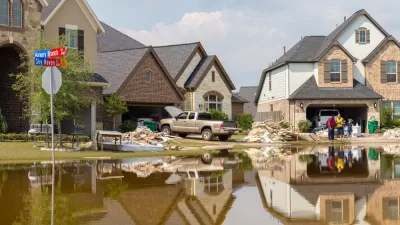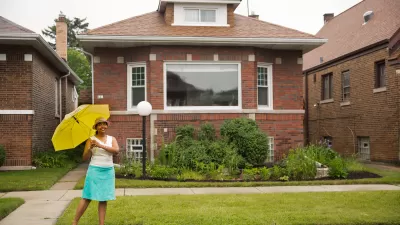As San Francisco's Chief Resilience Officer, Patrick Otellini’s job is to beef up city defenses against crises—a broad mandate that has him tackling seismic safety and water security through capital planning, utilities, and housing affordability.
Resilience work takes both the broad and the long view, uniting city systems to create a recovery plan for disasters over the next hundred years. "Most cities do [emergency] response really well, but start to see problems in the transition to recovery," Otellini tells The Planning Report.
Hence his interest in the housing market. One of San Francisco's major resilience goals is ensuring that interim transitional housing is available after a disaster—especially for renters, who Otellini says make up 70 percent of the city. "The faster we’re able to get people back into their homes after a disaster, the faster we will kickstart the recovery," he explains.
That approach is borne of sad experience. In 1989, the Loma Prieta earthquake devastated the city and put stress on housing and infrastructure, even though, Otellini says, it was only a moderate earthquake.
The city took ten years to develop a comprehensive, community-driven plan for seismic safety that would take 30 years to complete. And recognizing the shared vulnerability of the Bay Area, San Francisco recently issued guidelines requiring all capital-planning projects to incorporate an analysis of regional sea-level rise.
Collaboration is central to resilience planning by nature. The Rockefeller Foundation's 100 Resilient Cities program connects CROs around the world, creating a network where experts of different backgrounds (Otellini is also director of earthquake safety) can "fill in each other’s gaps." And in many cities, part of a CRO's job is connecting the dots between independent city projects to create an integrated recovery plan. Otellini’s position isn't housed in a particular department but reports directly to the mayor, allowing him to be a "conduit" between departments:
"Previously, factions concerned about seismic vulnerabilities didn’t talk to folks worried about sea-level rise. Neither talked to the private sector…or to transportation providers. We’re identifying everyone’s specific issues and saying we want to come up with a grand solution that helps all of these interdependencies."
FULL STORY: San Francisco's Chief Resilience Officer Prioritizes Earthquake, Housing & Sea-Level Preparedness

Planetizen Federal Action Tracker
A weekly monitor of how Trump’s orders and actions are impacting planners and planning in America.

The Simple Legislative Tool Transforming Vacant Downtowns
In California, Michigan and Georgia, an easy win is bringing dollars — and delight — back to city centers.

San Francisco's School District Spent $105M To Build Affordable Housing for Teachers — And That's Just the Beginning
SFUSD joins a growing list of school districts using their land holdings to address housing affordability challenges faced by their own employees.

In More Metros Than You’d Think, Suburbs are Now More Expensive Than the City
If you're moving to the burbs to save on square footage, data shows you should think again.

The States Losing Rural Delivery Rooms at an Alarming Pace
In some states, as few as 9% of rural hospitals still deliver babies. As a result, rising pre-term births, no adequate pre-term care and "harrowing" close calls are a growing reality.

The Small South Asian Republic Going all in on EVs
Thanks to one simple policy change less than five years ago, 65% of new cars in this Himalayan country are now electric.
Urban Design for Planners 1: Software Tools
This six-course series explores essential urban design concepts using open source software and equips planners with the tools they need to participate fully in the urban design process.
Planning for Universal Design
Learn the tools for implementing Universal Design in planning regulations.
Smith Gee Studio
City of Charlotte
City of Camden Redevelopment Agency
City of Astoria
Transportation Research & Education Center (TREC) at Portland State University
US High Speed Rail Association
City of Camden Redevelopment Agency
Municipality of Princeton (NJ)





























